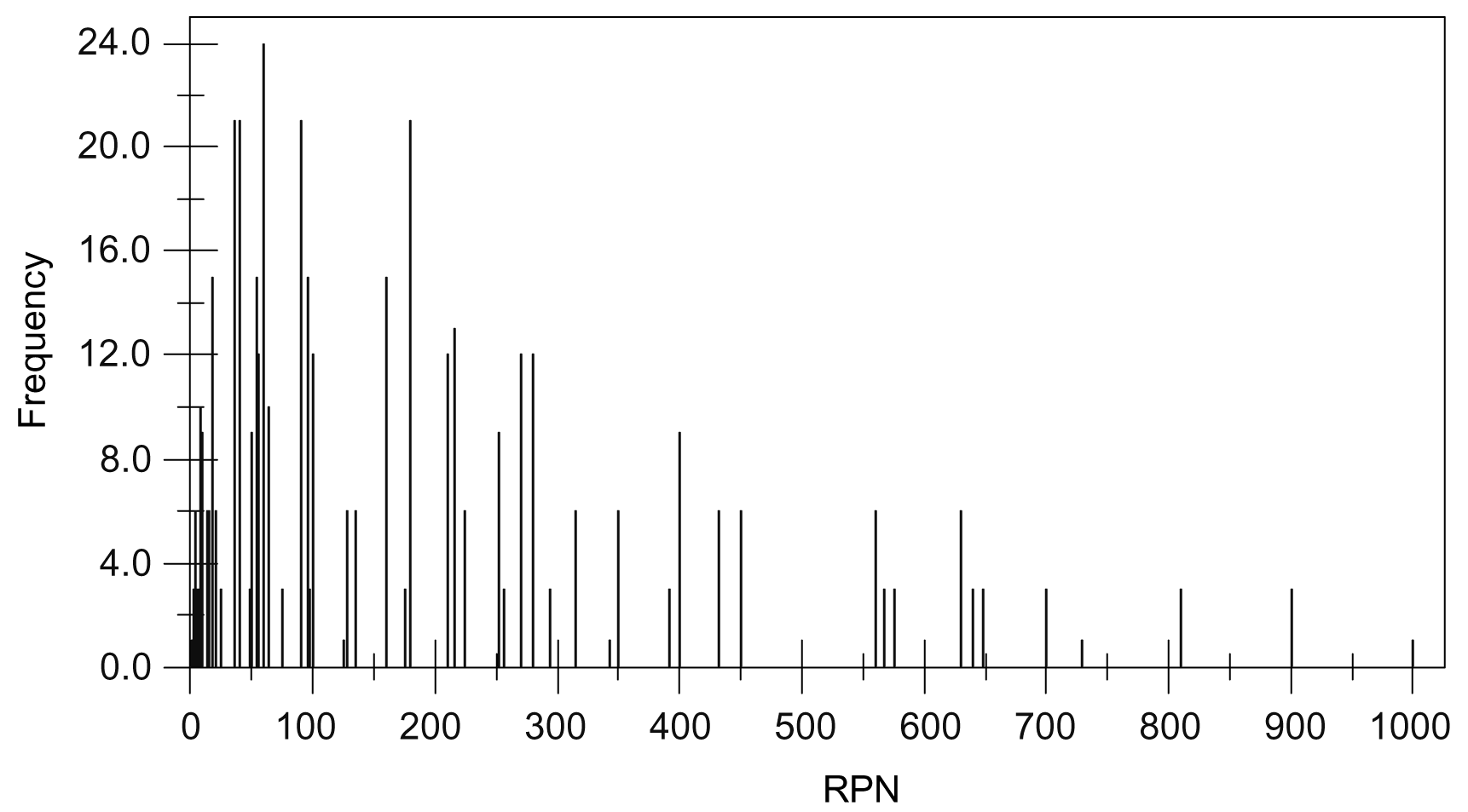
The so-called “Standard” risk model in SCANNELL uses the Failure Mode & Effect Analysis (FMEA) model.
Risk assessment typically involves identifying potential hazardous situations associated with a sequence of activities which could result in harm to people, property, or the environment. These hazards are ranked using a matrix on the basis of the potential severity of the resulting harm (e.g. Negligible, Minor, Serious, Critical, Catastrophic) and how likely it is to happen (e.g. Frequent, Probable, Occasional, Remote, Improbable).
In addition to the traditional factors of potential severity and likelihood of occurrence FMEA adds the dimension of possible detection as a factor.
Activities are rated on three scales: severity of failure (S), likelihood of occurrence (O), and difficulty of detection in advance (D).
Each is rated 1 to 10, with 10 being severe, very likely to occur, and impossible to detect. These three ratings are then multiplied together to obtain a value known as a Risk Priority Number, which are used to prioritise actions (RPN = S*O*D).
Note: The RPN, like the scores or values in other risk models, is a relative score designed to help prioritise actions and should not be considered as an absolute indication of risk.
The maximum RPN is 1000, however there are only 120 possible combinations (shown below) and severity-occurrence-detection combinations that score over 250 typically indicate an unacceptable level of risk and require immediate corrective action while those below 50 indicate low risk.

Histogram of RPN numbers generated from all possible combinations of severity, occurrence, and detection
Stamatis, D.H, “Failure Mode and Effect Analysis: FMEA from Theory to Execution”, ASQ Quality Press, 2003
It is difficult to represent the RPN in a simple matrix like traditional 2 dimensional risk models (5x5 or 3x3) because of the 3 dimensions.
The advantage of this methodology is that it makes it easier to identify the necessary controls because up to 15 factors are considered when scoring. For example:
|
Severity |
Likelihood |
Detection |
|
No of People at Risk
Sensitivity of People at Risk
Duration of Exposure
Nature of Hazard
Regulatory Limits/Guidelines |
Workplace/Job Design (Isolation, Organisational Controls)
Elimination / Reduction of Risk (Engineering Controls)
Administrative Controls (Documentation)
Knowledge/Competency
Standard of Work Equipment (Incl PPE) |
Monitoring/Inspections
History of Complaints, Incidents or Near Misses
Equipment Reliability & Maintenance
Mode of Warning
Management System Audit |
The Standard Model therefore tends to have more detail and a bit less subjectivity than the typical scoring methodologies. Actions can be directed at the controls that will bring down the severity or reduce the likelihood.
The FMEA methodology however does have some weaknesses in that certain combinations with the same (RPN) score can have quite different potential risks.
For example S:2, P:6, D:10 (low severity, relatively high likelihood and impossible to detect) has the same score (120) as the combination S:8, P:5, D:3 (high severity, medium likelihood, relatively easy detection). Therefore a level of common sense needs to be applied when assessing the scores and creating actions.
In this Manual we explain the options available in the Standard Risk Templates, however other templates are available for other types of assessment or ones that have been customised for your company.
Make a selection from each of the dropdown options available. Enter some justification text against each selection.
|
|
If the choices don't seem to cover the answer you have in mind choose the most appropriate "score" value and comment on this in the justification box. |
|
|
The maximum score is 1000 calculated by the average of the selections made from each of the three sections multiplied by each other. Typically scores will be in the range 40 – 300 because of the controls in place. |